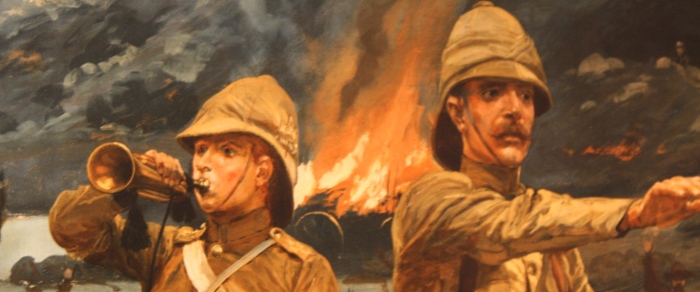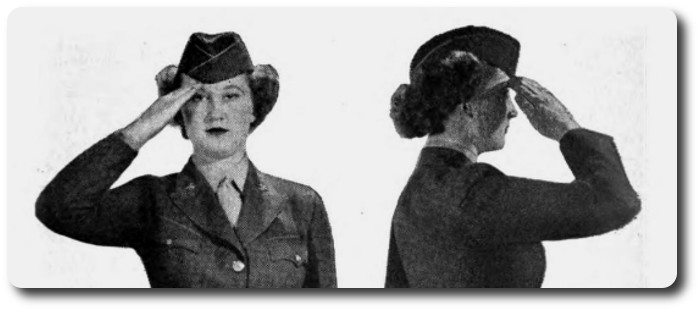Pay; Canadian Contingents in South Africa
Topic: Pay; the Queen's shilling

Pay; Canadian Contingents in South Africa
Extract from a Report of the Committee of the Honourable the Privy Council, approved by His Excellency on the 18th day of March, 1900.
On a Memorandum dated 12th March, 1900, from the Minister of Militia and Defence, recommending that the pay of Officers, Non-Commissioned Officers and men of the Canadian Contingents of Special Service in South Africa be as follows:—
1. Up to and inclusive of the date of disembarkation in South Africa:—
(a.) 1st Contingent, comprising the 2nd (Special Service) Battalion, Royal Canadian Regiment, and reinforcements:—
| Rank. | Pay.
($ cts.) | Allowances.
($ cts.) | Total.
($ cts.) |
| Lieut.-Colonel | 4.00 | 0.75 | 4.75 |
| Major | 3.50 | 0.75 | 4.25 |
| | 2.82 | | 2.82 |
| | 2.00 | | 2.00 |
| Adjutant, according to rank | | 0.50 | |
| | 2.80 | | 2.82 |
| Medical Officer | 3.00 | | 3.00 |
| Sergeant Major | 1.25 | | 1.25 |
| Sergeant | 1.00 | | 1.00 |
| Sergeants | 1.00 | | 1.00 |
| Sergeants | 1.00 | | 1.00 |
| | 0.80 | | 0.80 |
| | 0.75 | | 0.75 |
| Privates | 0.50 | | 0.50 |
| Buglers | 0.50 | | 0.50 |
Being the rates of pay provided for the permanent corps of Canada, and allowances with the exception that the pay of privates is at the rate of 50 cents per diem, the rate of pay of a private in the several corps of the Active Militia, instead of 40 cents, the rate provided for the permanent corps.
And in addition to the foregoing, in the case of officers in permanent employment, such amounts as wil make their pay equal to that of the pay and allowances of their appointment, and, in the case of officers of the permanent corps, amounts equal to such increments of pay as have accrued to them under the regulations governing pay of the permanent corps (Part III, Sec. 3, Para. 15, Regulations and Orders for the Militia, 1898).
(b.) The 2nd Contingent, comprising the Canadian Mounted Rifles and the Brigade Division of the Royal Canadian Artillery:—
Officers
| N.W. Mounted Police | Special Service Force | |
| Commissioner | Lieut.-Colonel | 7.12 |
| Commissioner | Major | 4.88 |
| | Captain | 3.84 |
| | Lieutenant | 2.75 |
| Surgeon | Medical Officer | 3.84 |
| Veterinary Surgeon | Officer | .75 |
N.C. Officers and Men
| N.W. Mounted Police | Service Force | |
| Sergts (higher rate) | Regimnetal Sergt. Maj. | $2.00 |
| Other Staff Sergts (higher rate) | Battery or Squadron Sergeant Major | 1.50 |
| Battery or Squadron Quarternaster Sergeant |
| Orderly Room Sergeant |
| Hospital Sergeant |
| Pay Sergeant |
| Other Non-Commissioned Officers, Sergeants | Orderly Room Clerk | 1.00 |
| Sergeants |
| Other Non-Commissioned Officers, Corporals | Corporals | .85 |
| | Bombadiers | 0.80 |
| Private | Private | 0.75 |
| | Farrier Quartermaster Sergeant | 1.75 |
| | Sergeant | 1.50 |
| Other Artificers | Corporal | 1.25 |
| Bombadier |
| Private |
| | Trumpeter | 1.00 |
Being the rates of pay provided for the North-west Mounted Police, with the exception that the pay of privates is at the maximum rate of pay for privates in that force, viz.: 75 cents per diem instead of at the rate of from 50 to 75 cents per diem, according to service.
2. From the date of debarkation in South Africa:—
(a.) 1st Contingent and reinforcements:—
By Her Majesty's Government, as agreed upon:
The rates of pay provided for infantry in the Royal Warrant for pay;
By the Government of Canada:
Such additional amounts as will be required to make the total pay of each Officer, N. C. Officer and man equal to that specific in paragraph 1 (a) above.
(b.) 2nd Contingent:—
By Her Majesty's Government, as agreed upon:
The rates of pay provided, in the case of Mounted Rifles, for Cavalry; and in the case of the Field Artillery, for Field Artillery, in the Royal Warrant for pay.
By the Government of Canada:
Such additional amounts as will be required to make the total pay of each Officer, N. C. Officer and man equal to that specific in paragraph 1 (b) above.
The Minister further recommends that all officers attached to the army for instructional or other purposes at the request and with the approval of the Government of Canada, including chaplains with the relative rank of captain, and nurses with the relative rank of lieutenant, be paid the rates of pay provided for that rank in the permanent corps with which they are attached, except in the case of officers belonging to the permanent corps or in permanent employment, which shall be paid, in addition, such allowances and increments as they may be entitled to under the Regulations and orders for the Militia, 1898, and that such part of their pay as is not paid by Her Majesty's Government, be paid by the Government of Canada.
The Minister further recommends that separation allowance as hereunder be paid:—
In the case of Officers: One half the amount of such Officer's pay to the wife.
In the case of N. C. Officers and men:—
| Rank | Wife | Son under 14 Years | under 14 Years. |
| Sergeant | .50 | 0.05 | 0.05 |
| Corporal | 0.35 | .05 | 0.05 |
| Private | 0.25 | .05 | .05 |
such allowances to be paid from and inclusive of the date of embarkation.
The Committee submit the same for Your Excellency's approval.
John G. McGee
Clerk of the Privy Council
Posted by regimentalrogue
at 12:01 AM EDT






 A correspondent writes to the Broad Arrow as follow:—
A correspondent writes to the Broad Arrow as follow:—



 Regulations for the Annual Drill of 1874-75, Dominion of Canada
Regulations for the Annual Drill of 1874-75, Dominion of Canada
 Inside the Regiment; The Officers and Men of the 30th Regiment During the Revolutionary and Napoleonic Wars, Carole Divall, 2011
Inside the Regiment; The Officers and Men of the 30th Regiment During the Revolutionary and Napoleonic Wars, Carole Divall, 2011
 Finally, there was the question of pay, a shilling a day for the first seven years of service, rising to l/1d after seven years, and 1/2d after fourteen years. This needs to be compared with civilian rates. For example, agricultural labourers earned an average of 2/- a day, while skilled textile workers might earn as much as 4/- a day. In addition, the soldier received a penny a day as beer money, and sixpence for subsistence when on the march, twopence of which remained his after fourpence had been paid to the innkeeper who fed him. Since food, clothing and accommodation were all provided, he might well feel satisfied with his lot — were it not for the deductions the army demanded. Stoppages for necessaries, as we have seen, could amount to 1/6d a week maximum, while a further 4/7d maximum might he taken for messing expenses, including the supply of vegetables. If the full amounts were exacted, the soldier would be left with 1/6d a week, hardly a princely sum. And yet some men managed to leave a considerable sum upon their death, anything between five and ten pounds not being unusual.
Finally, there was the question of pay, a shilling a day for the first seven years of service, rising to l/1d after seven years, and 1/2d after fourteen years. This needs to be compared with civilian rates. For example, agricultural labourers earned an average of 2/- a day, while skilled textile workers might earn as much as 4/- a day. In addition, the soldier received a penny a day as beer money, and sixpence for subsistence when on the march, twopence of which remained his after fourpence had been paid to the innkeeper who fed him. Since food, clothing and accommodation were all provided, he might well feel satisfied with his lot — were it not for the deductions the army demanded. Stoppages for necessaries, as we have seen, could amount to 1/6d a week maximum, while a further 4/7d maximum might he taken for messing expenses, including the supply of vegetables. If the full amounts were exacted, the soldier would be left with 1/6d a week, hardly a princely sum. And yet some men managed to leave a considerable sum upon their death, anything between five and ten pounds not being unusual. 

 The Guide: A Manual for the Canadian Militia (Infantry)
The Guide: A Manual for the Canadian Militia (Infantry)